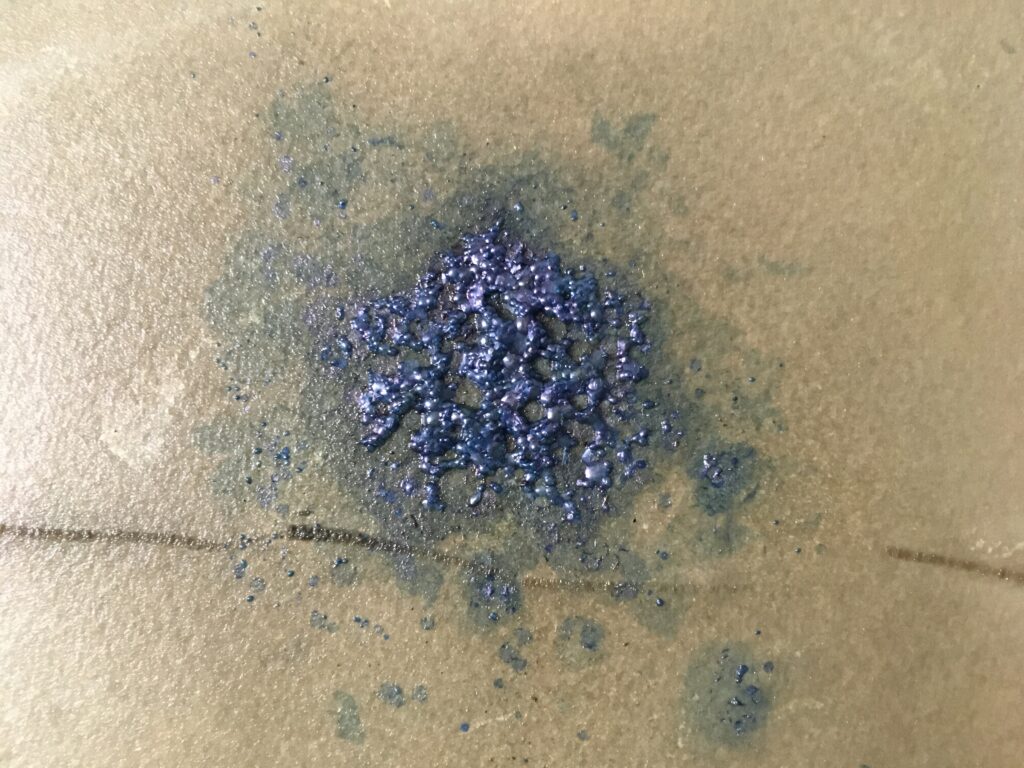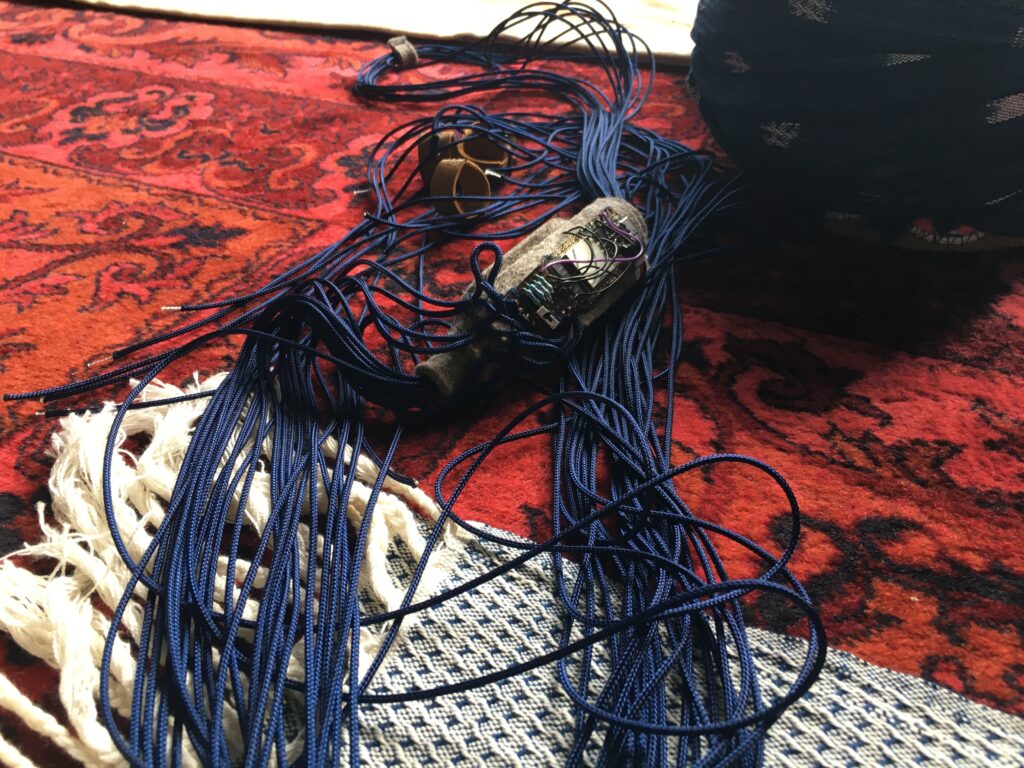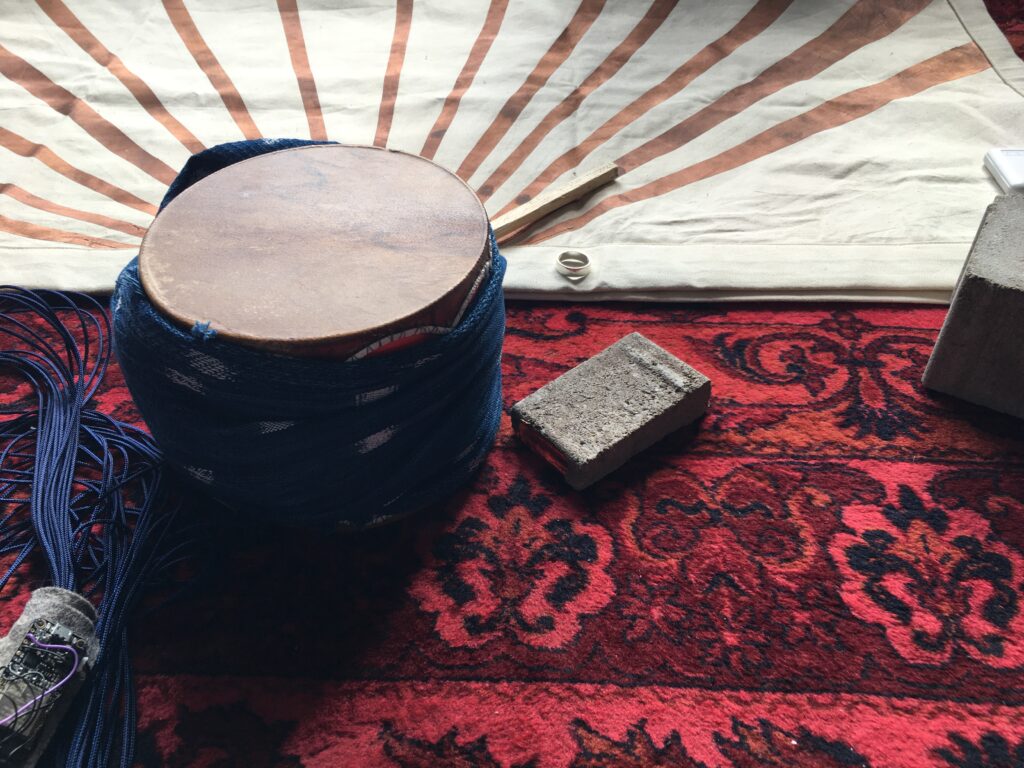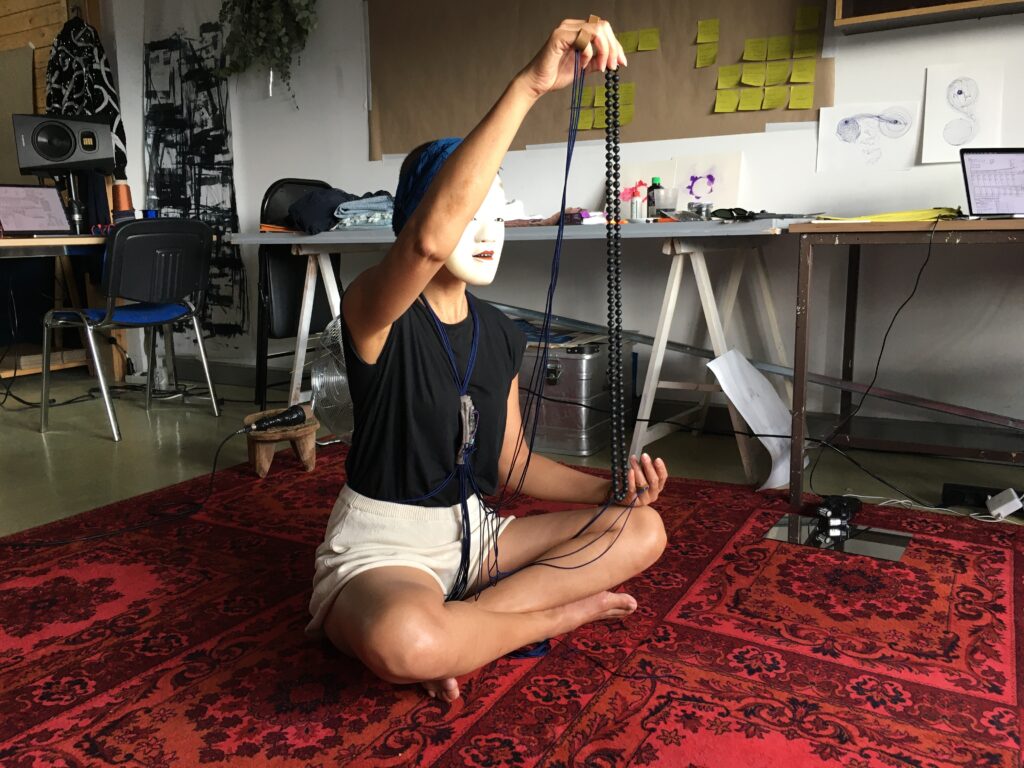16.6.2025









This week we are focusing on Tantra. Tantra comes from the Sanskrit meaning weave and loom. Tantra in this case means the rituals and practices in which the mantra (sounds) and the yantra (scores, formulas, devices; yantra means machine or instrument) are applied and activated. It’s about sacralizing the actions that we do; because when we are goal oriented we are not always aware of the energetic charge of our gestures. Sacred in this sense is the potential to remember through these gestures, the ‘unknown that we (do not know we) know’ (as Claire Petitmengin would say), through the technologies that we develop.
The indigo process is a yantra within the greater tantra of the installation. The actions involved take time, as the biomechanics of movement, touch and grasp ‘perform’ the indigo process. Mika and I dicuss rituals like the Sādo tea ceremony in Japan and the Eucharist in the Catholic church.
Eventually we speak of creating an indigo ceremony with precise gestures, and specific vessels for each aspect of the process; getting away from the use of indigo, we want to imagine developing an embodied relationship with the process; making indigo as an example of a ‘score for unknowing’.
“Blue is the color of longing for the distances you never arrive in, for the blue world.” Rebecca Solnit
Blue as the colour of the unknown… and of the blues of not knowing (or do you get the blues from knowing?
The process of making indigo and pour way of working with an AI model are both ‘rituals of endings’: endings has an open meaning… end of the world, end of using commercial dyes, end of being biped, end of human species…? We won’t say.
In Indian rituals, there are specific gestures associated with the ritual:
sprinkling, squeezing, taking off, uniting, rejecting, planting a seed / insemination, gestation/ waiting, giving birth, arousing, caressing, decline / collapse, duration, wandering (from the book, Gods of Love and Ecstasy by Alain Daniélou).
I am thinking of the ‘desire for blue’ that is at the origin of indigo making, and then I read that the “kundalini is said to comprise of all audible and visible sound; and the first flush of awareness is the initial sound form ‘a’, from which in due course the entire alphabet proceeds. This awareness-sound as it arises in the root base centre is termed the transcendental speech, characterised by an intention or will which is unspecified but fundamental.” (p48-49, Tantra Mantra Yantra) It’s not a particular person’s will, but it’s something connected with the will of a deep remembering. It continues: “it is not a desire for something or a will to do anything: but the glimmer of volition which lies at the back of all life.” (P49)
Maybe scores for unknowing allow for an impersonal will to reveal knowing…
I decided to use the mala (rosary or meditation beads) to help me stick with a repetition for 108 times and be patient about letting the AI voice respond. The mala is heavy, made of stone, it’s weight gives it a particular movement. I use it to play the drum in an unpredictable way. It moves like the mysteriosu kundalini snake. An electric fan sets off a drone-like sound in the mix. By putting the indigo seeds in a paper cup, there is a hissing resonance, a rattle-snake. The system responds with multiple voices and dimensions of sound, ‘male’ and ‘female’ voices. I already noticed how it reminds me of the music from 2001 Space Odyssey, when the black monolith is discovered.
In the end, words began to sound again, something like ’horror’ and ‘terror’. Or am I making this up?
The Noh mask is part of the votive objects of our ritualization research. Part of the ‘masked’ phase of the process; the ritual must mask the process to make it sacred.
When we are ‘doing the work’ (in the flow), without self-conscious awareness, the process is visible, open, but invisible at the same time because the goal or outcome makes the body’s activity transparent to consciousness. When the ritual occurs before witnesses, a mask is required to help the witnesses lose their self-consciousness.
We can work with these two modes to explore the visible and the hidden and how this affects the physical movements and gestures of a process. These two modes make me think of the ‘detached eye’ of Noh (and Butoh). It is neither of these states and both. It is ‘awareness-activity’ not “bound to phenomenal conditions”. (p49) The detached eye/I is a state where the ritual enables a loss of self-consiousness in both witnesses and actors/performers and enables the collapse of the subject-object duality. For a split second, awareness expands.